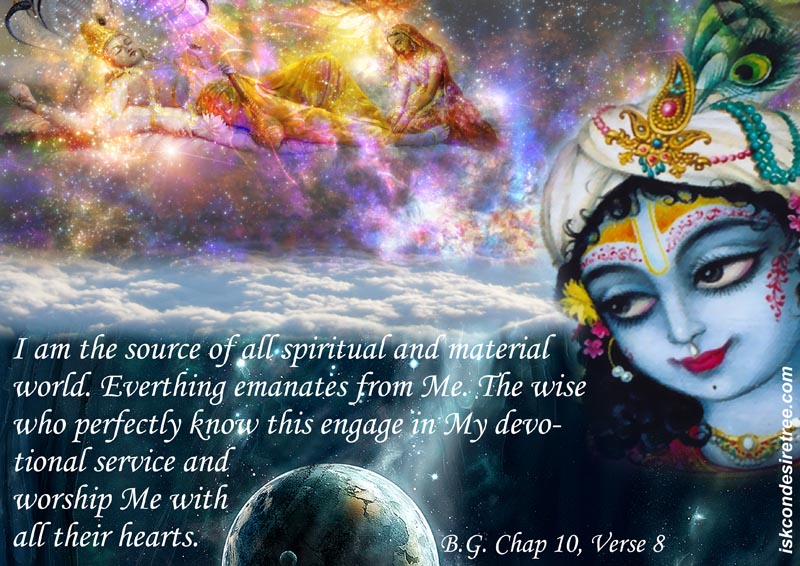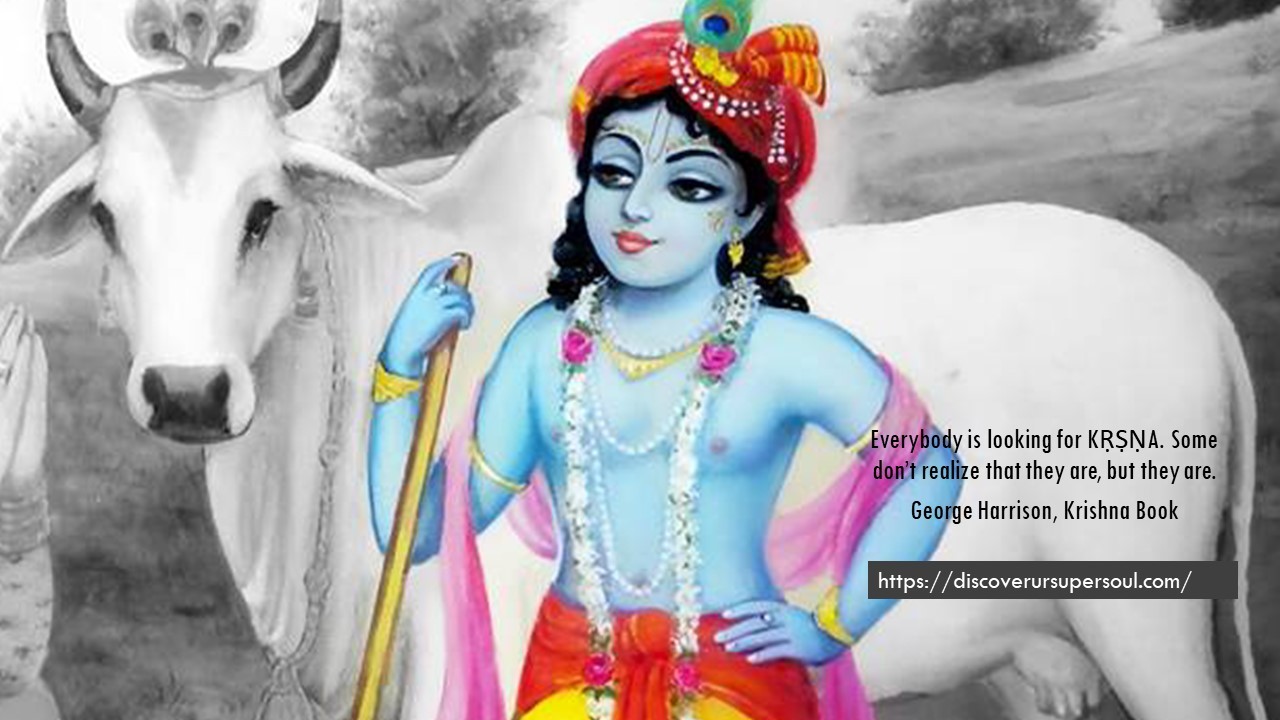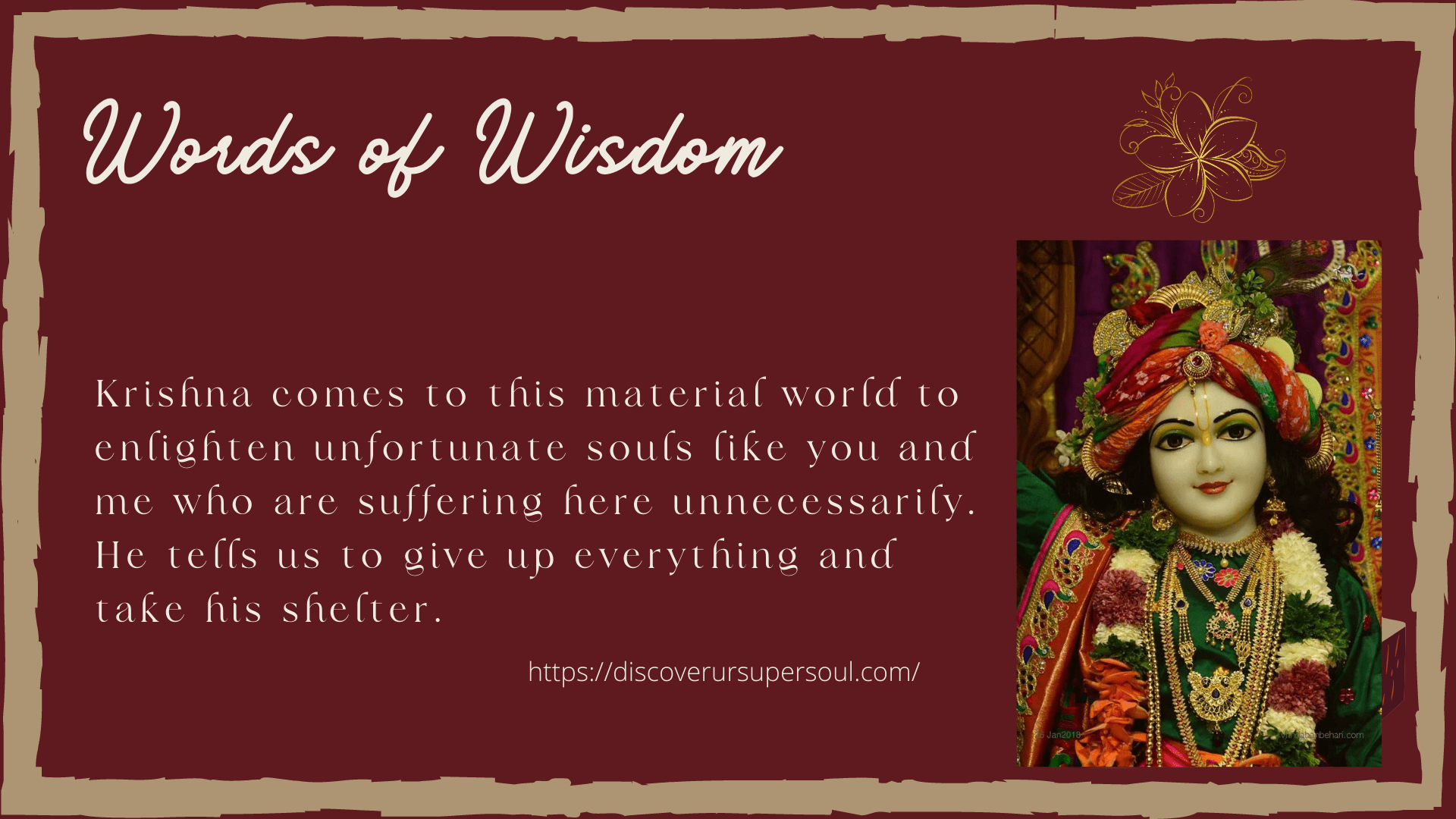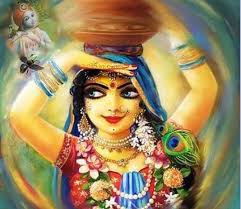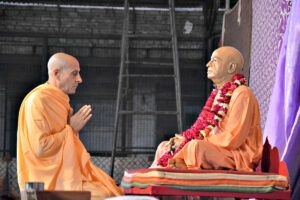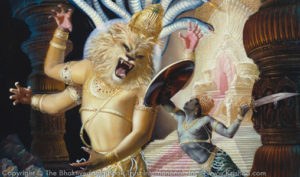
Within Gaudiya Sampradaya, Śrī Caitanya-caritāmṛta is considered post graduate study of Śrīmad-Bhāgavatam.
Śrīmad-Bhāgavatam is the essence of all Vedic literatures. It is the commentary on Vedanta sutra by Vedavyāsa.
Srimad Bhagavatam speaks highest truth
In the beginning of Śrīmad-Bhāgavatam, Vedavyāsa rejects all religious rituals which is for material gain, and he directly propagates pure devotion for the Supreme Lord.
“Completely rejecting all religious activities which are materially motivated, this Bhāgavata Purāṇa propounds the highest truth, which is understandable by those devotees who are fully pure in heart. The highest truth is reality distinguished from illusion for the welfare of all. Such truth uproots the threefold miseries. This beautiful Bhāgavatam, compiled by the great sage Vyāsadeva [in his maturity], is sufficient in itself for God realization. What is the need of any other scripture? As soon as one attentively and submissively hears the message of Bhāgavatam, by this culture of knowledge the Supreme Lord is established within his heart.” Śrīmad-Bhāgavatam 1.1.2
Śrī Caitanya-caritāmṛta begins where Śrīmad-Bhāgavatam ends. In Śrī Caitanya-caritāmṛta, we get to know how to consistently perform pure devotion to Krishna.
Devotees’ eagerness to know the pastimes of Lord Chaitanya after he took sannyas
500 years back devotees in Vrindavan requested Kṛṣṇadāsa Kavirāja Gosvāmī to write Śrī Caitanya-caritāmṛta. They wanted him to describe the life of Lord Chaitanya, his teachings, philosophy, activities and pastimes elaborately. When this was requested from Kṛṣṇadāsa Kavirāja Gosvāmī, he was very old.
Srila Vrindavana Dasa Thakur had already written Chaitanya Bhagavata, a biography of Lord Chaitanya.
Chaitanya Bhagavata was originally known as Chaitanya Mangala but later the book was renamed as Chaitanya Bhagavata by Srila Vrindavana Dasa Thakur.
Srila Prabhupada explained the reason behind this, “Śrī Vṛndāvana dāsa Ṭhākura’s Śrī Caitanya-bhāgavata was originally entitled Śrī Caitanya-maṅgala, but when Śrīla Locana dāsa Ṭhākura later wrote another book named Śrī Caitanya-maṅgala, Śrīla Vṛndāvana dāsa Ṭhākura changed the name of his own book, which is now therefore known as Śrī Caitanya-bhāgavata.” Śrī Caitanya-caritāmṛta, Ādi-līlā, 8.33 Purport
Chaitanya Bhagavata was highly revered. But fearing that the book will become voluminous, Srila Vrindavana Das Thakur did not describe much the latter life of Sri Chaitanya Mahaprabhu especially his life after he took sannyas. In Chaitanya Bhagavata, the pastimes of Lord Chaitanya in Jagannath Puri, his Vrindavan and South India Yatra was just summarised.
So, the request was made to Kṛṣṇadāsa Kavirāja Gosvāmī to write a book which describes the pastimes of Lord Chaitanya which was not in detail in Chaitanya Bhagavata.
At that time Kṛṣṇadāsa Kavirāja Gosvāmī was living in Vrindavan Dham. Out of humility, he considered himself unqualified to describe the pastimes of Lord Chaitanya.
What Kṛṣṇadāsa Kavirāja Gosvāmī says about describing the pastimes of Lord Chaitanya?
Kṛṣṇadāsa Kavirāja Gosvāmī had never met Lord Chaitanya or Lord Nityananda. His only connection with Lord Nityananda was that Lord Nityananda appeared in his dream and blessed him to go to Vrindavan.
Kṛṣṇadāsa Kavirāja Gosvāmī mentions about this in Śrī Caitanya-caritāmṛta.
“O my dear Kṛṣṇadāsa, do not be afraid. Go to Vṛndāvana, for there you will attain all things. After saying this, He directed me toward Vṛndāvana by waving His hand. Then He disappeared with His associates.” Śrī Caitanya-caritāmṛta, Ādi-līlā, 5.195 – 196
Kṛṣṇadāsa Kavirāja Gosvāmī was full of humility and had completely surrendered to the Lord.
He was a disciple of Srila Raghunatha Dasa Goswami. In Vrindavan, he would daily hear from his guru about the pastimes of Lord Chaitanya for hours.
Raghunath Dasa goswami was with Lord Chaitanya in Jagannath Puri. He was serving under Svarupa Damodara. Raghunath Dasa goswami was so humble that he hardly spoke to Lord Chaitanya directly because he thought himself to be unqualified.
He was in Jagannath Puri when Lord Chaitanya departed from this world. Soon after the departure of Lord Chaitanya, Lord Nityananda and Swarup Damodar left the world.
After their departure Raghunath Dasa goswami came to Vrindavan. In Vrindavan, he would narrate the pastimes of Lord Chaitanya for the pleasure of all the devotees.
Kṛṣṇadāsa Kavirāja Gosvāmī says that Lord Ananta, with his unlimited mouths cannot describe the pastimes of Lord Chaitanya which he performed in one day. And even Ganesha would not be able to write the pastimes of Lord Chaitanya in millions of years.
What is inconceivable to Krishna?
In this material world, everything is bound by the limitation of time and space but not in the spiritual world. In the spiritual world everything is inconceivable. Although Krishna is cause of all causes, everything comes from him but still love of Radha for him is inconceivable.
So, Krishna comes to this world to experience what is inconceivable to him i.e. to experience the love of Radha which she has for him. So, he comes in the mood of Radharani and as a devotee of Krishna.
Kṛṣṇadāsa Kavirāja Gosvāmī gets the permission of Madana-Mohan to write the book
Kṛṣṇadāsa Kavirāja Gosvāmī was asked to write philosophical truth about Lord Chaitanya’s life. Since it was the desire of the devotees so Kṛṣṇadāsa Kavirāja Gosvāmī thought let me try my best. In spiritual life success is proportional to how much we are dependent on Krishna and the mercy of the devotees.
So, before beginning the service of writing this book, he was going to every devotee to seek their blessings. He went to seek blessings of Gopala Bhatta Goswami. Gopala Bhatta Goswami said that I will give you my blessings but do not put my name in the book.
Kṛṣṇadāsa Kavirāja Gosvāmī went to Madana-Mohan temple to seek the blessing of the Supreme Lord. As he was praying to the Lord the garland of Madana-Mohan fell. All the prominent Vaisnavas were present in the temple at that time and when they saw garland falling, they loudly chanted “Haribol!.”
The pujari of the temple, Gosani dasa, immediately took the garland and put it around the neck of Kṛṣṇadāsa Kavirāja Gosvāmī. All the Vaisnavas said that Madana-Mohan has given the permission to write the book.
Kṛṣṇadāsa Kavirāja Gosvāmī mentions about this in his book, “When I visited the temple of Madana-mohana, the priest Gosāñi dāsa was serving the feet of the Lord, and I also prayed at the Lord’s lotus feet. When I prayed to the Lord for permission, a garland from His neck immediately slipped down. As soon as this happened, the Vaiṣṇavas standing there all loudly chanted, “Haribol!” and the priest, Gosāñi dāsa, brought me the garland and put it around my neck. I was greatly pleased to have the garland signifying the order of the Lord, and then and there I commenced to write this book.” Śrī Caitanya-caritāmṛta, Ādi-līlā, 8.74 – 77
What documents were used to write Śrī Caitanya-caritāmṛta?
While writing Śrī Caitanya-caritāmṛta, Kṛṣṇadāsa Kavirāja Gosvāmī, used the notes of Svarupa Damodar and the pastimes which he heard from Raghunath Das Goswami. Svarupa Damodar a personal associate of Lord Chaitanya Mahaprabhu had recorded the pastimes of Lord Chaitanya. Raghunath Dasa Goswami had memorized those notes of Svarupa Damodar.
“I have heard from the mouth of Raghunātha dāsa Gosvāmī all that Svarūpa Dāmodara Gosvāmī recorded in his notes about the pastimes of Śrī Caitanya Mahāprabhu. I have briefly described those pastimes. Whatever I have written is by the mercy of Śrī Caitanya Mahāprabhu, since I am an insignificant living being.” Śrī Caitanya-caritāmṛta, Antya-līlā, 3.269 – 270
The prolific writer completes the book but does not take the credit
Kṛṣṇadāsa Kavirāja Gosvāmī,a prlific writer, is an epitome of humility. He wrote such a great literature, but he does not take any credit for it. He thanks Madana – Mohana, Lord Chaitanya, Lord Nityananda, all the associates of Lord Chaitanya and Lord Nityananda and all the Vaisnvas for their mercy in writing Śrī Caitanya-caritāmṛta.
Not just that he even worships the readers who will be reading his books.
“I now worship the lotus feet of all my readers, for by the mercy of their lotus feet there is all good fortune. If one hears the pastimes of Lord Śrī Caitanya Mahāprabhu as described in Śrī Caitanya-caritāmṛta, I wash his lotus feet and drink the water. I decorate my head with the dust of the lotus feet of my audience. Now you have all drunk this nectar, and therefore my labor is successful. Praying at the lotus feet of Śrī Rūpa and Śrī Raghunātha, always desiring their mercy, I, Kṛṣṇadāsa, narrate Śrī Caitanya-caritāmṛta, following in their footsteps.” Śrī Caitanya-caritāmṛta, Antya-līlā, 20.150 – 153

